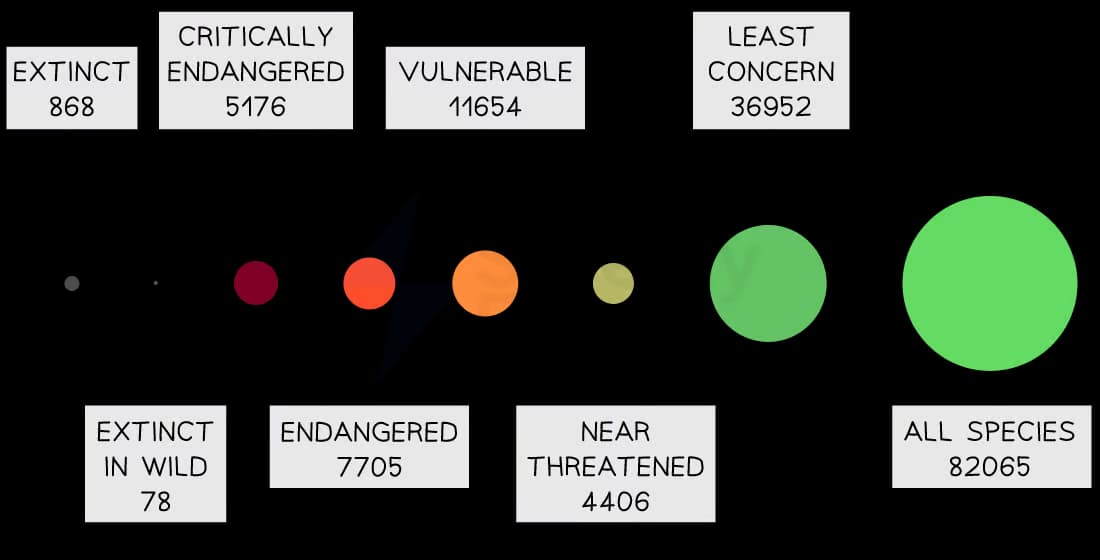Syllabus Edition
First teaching 2024
First exams 2026
Assessing Conservation Status (DP IB Environmental Systems & Societies (ESS)): Revision Note
Assessing conservation status
International cooperation is essential if conservation is to be successful
There are several agreements and authorities that exist within and between countries with the aim of protecting and conserving species worldwide
IUCN
The International Union for the Conservation of Nature (IUCN) is the global authority on the status of the natural world and the measures needed to safeguard it
One of the duties that the IUCN carries out is assessing the conservation status of animal and plant species around the world:
Scientists use data and modelling to estimate the category each species should be in
Factors used to determine the conservation status of a population include:
Population size (smaller populations are usually at a greater risk of extinction)
Rate of increase or decrease of the population
Degree of specialisation
Distribution (geographic range)
Reproductive potential and behaviour (breeding potential)
Geographic range
Degree of endemicity (i.e. if the species is only found in a single specific area)
Degree of habitat fragmentation
Quality of habitat
Trophic level (animals in higher trophic levels are usually at a greater risk of extinction)
Known threats

The IUCN has their own classification system:
There are several different categories and levels that a species can fall into depending on its population numbers and the threats and risks to those populations
Species that have been assessed are categorised by the IUCN as:
LC = least concern
NT = near threatened
VU = vulnerable
EN = endangered
CR = critically endangered
EW = extinct in the wild
EX = extinct
Species can also be classed as DD (data deficient) when there is not enough data on which to base a category choice, or as NE (not evaluated)
Animals that are on the IUCN Red List of Threatened Species™ can be seen online as this list is made public
Giving a global conservation status highlights how vulnerable certain species are
This helps governments, NGOs and individuals to select appropriate conservation priorities and management strategies

Although the data shown above is from 2016, the number of species assessed is increasing every year and in 2023, this figure reached almost double the amount from 2016, with just under 160 000 species assessed
However, this means that extinction risk has still only been evaluated for less than 5% of the world's described species

Unlock more, it's free!
Did this page help you?